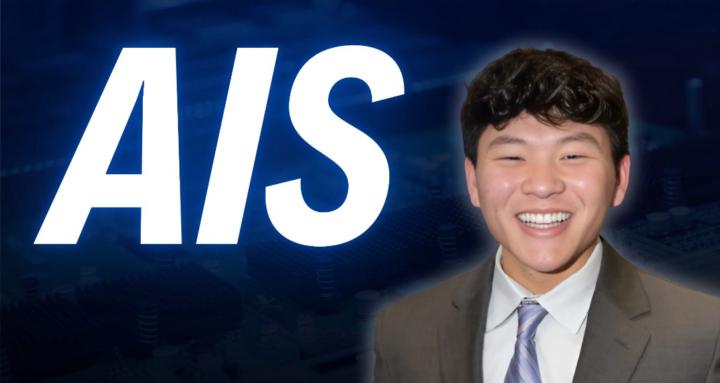🔥
4h (edited) • General Discussion 💬
You're Burning Money with RAG, REFRAG instead! Meta Just Fixed It (30x Faster, 16x More Context)
If you built a RAG system, you made a crucial mistake. Not your fault—everyone did.
You're feeding your LLM massive amounts of text it doesn't need. Paying to process tokens that don't matter. Waiting for responses while the model reads through garbage. And getting slower, more expensive results than necessary.
Meta AI just released research that proves something most people building RAG systems don't realize: most of what you retrieve never actually helps the LLM generate better answers.
You're retrieving 10 chunks. Maybe 2 are useful. The other 8? Dead weight. But your LLM is processing all of them. Reading every word. Burning through your token budget. Adding latency to every response.
This is the hidden cost of RAG that nobody talks about. And it's getting worse as you scale.
But here's what just changed. Meta's new method REFRAG doesn't just retrieve better. It fundamentally rethinks what information actually reaches the LLM.
The results? 30.85x faster time-to-first-token. 16x larger context windows. Uses 2 to 4 times fewer tokens. Zero accuracy loss.
Let me show you exactly what's happening and how to implement this approach right now.
The Problem With Every RAG System You've Built
Traditional RAG works like this. Query comes in. You encode it into a vector. Fetch the most similar chunks from your vector database. Dump everything into the LLM's context.
Sounds good. Works okay. But it's brutally inefficient.
Think about what's actually happening. You retrieve 10 document chunks because they're similar to the query. But similar doesn't mean useful. Some chunks are redundant—saying the same thing different ways. Some are tangentially related but don't answer the question. Some are just noise.
But your LLM reads all of it. Every single token. It's like making someone read 10 articles when only 2 are relevant, and you're paying by the word.
The costs compound fast. More tokens means higher API bills. Longer processing time means slower responses. Bigger context means you hit limits faster. And none of it improves your answer quality.
You're optimizing retrieval but not filtering what actually matters.
How REFRAG Works: Compress, Sense, Expand
Meta's approach is completely different. Instead of dumping everything into the LLM, REFRAG uses three steps that cut through the waste.
First: Compress. Break retrieved documents into small chunks—16 tokens each. A lightweight encoder like RoBERTa compresses each chunk into a single vector embedding. This happens during retrieval and gets cached, so you're not recalculating it every time.
Second: Sense. A reinforcement learning policy evaluates these compressed embeddings and predicts which chunks will actually help the LLM answer the question. Not just which are similar—which will improve the response.
Third: Expand. Only the chunks that pass this test get expanded back into full token embeddings and sent to the LLM. Everything else stays compressed as a tiny placeholder vector.
The LLM processes exactly what matters. Attention computation scales with number of chunks, not number of tokens. Memory usage drops. Speed explodes.
The Numbers That Change Everything
30.85x faster time-to-first-token compared to standard RAG. When you ask a question, you start seeing the answer 30 times faster.
16x larger context windows. You can process 16 times more information without hitting limits. A model with a 4,096-token window effectively handles over 64,000 tokens.
2 to 4x fewer decoder tokens. Your token costs drop by half to three-quarters while maintaining the same accuracy.
REFRAG outperforms LLaMA on 16 different RAG benchmarks. Better results. Dramatically lower costs.
And here's the critical part—you don't need to modify your LLM architecture. This is a decoding framework that works with existing models.
How to Implement This Approach Today
Meta's official code will be released at github.com/facebookresearch/refrag. But you don't have to wait.
There's already a working community implementation at github.com/simulanics/REFRAG that you can use right now. It's a single-file Python implementation that recreates the compress-sense-expand architecture.
Here's what you need:
Install the basics: PyTorch, Transformers, FAISS for vector search, and standard NLP libraries. The repo includes installation scripts for CUDA, ROCm, Apple Silicon, or CPU.
The implementation includes everything: retrieval with FAISS, chunk encoding with RoBERTa, selective expansion with a policy network, and full generation pipeline.
Step-by-step to get running:
One: Index your documents. The system breaks them into chunks and creates embeddings you can search against.
put this in your terminal:
python refrag.py index --corpus your_documents.txt --index_dir runs/index --embed_model BAAI/bge-small-en-v1.5
Two: Train the selective expansion policy. This is the RL component that learns which chunks to keep expanded and which to compress.
put this in your terminal:
python refrag.py train_policy --rag_json training_data.jsonl --index_dir runs/index --topk 8 --k 64 --p 0.25
Three: Generate responses using the trained system.
put this in your terminal:
python refrag.py generate --index_dir runs/index --question "Your query here" --topk 8 --k 64 --p 0.25
The system automatically handles compression, selective expansion, and generation. You control how many chunks to retrieve, how many tokens per chunk, and what percentage to expand.
Alternative: Implement Selective Retrieval Without REFRAG
If you're not ready to use REFRAG, you can get most of the benefits by adding intelligent reranking to your existing RAG pipeline. This is something you can implement this week.
The core insight is the same: stop sending everything to your LLM. Add a filtering step that scores retrieved chunks for actual relevance before generation.
Tools you can use right now:
Cohere Rerank: A cross-encoder that scores query-document pairs. Retrieve 20-30 chunks with your vector search, then rerank to keep only the top 3-5 most relevant. Cohere offers an API for this.
LangChain or LlamaIndex with reranking: Both frameworks have built-in support for reranking. You can drop in models like cross-encoders or ColBERT-based rankers to filter results before sending to your LLM.
RAGatouille: Uses ColBERT for token-level scoring. Works as both a retriever and reranker, integrates with existing stacks. Open source and free.
A practical implementation pattern:
Set up two-stage retrieval. First stage casts a wide net—retrieve 20-25 chunks based on vector similarity. Second stage applies a reranker that scores each chunk against the query using deeper analysis.
Only send the top 3-5 reranked chunks to your LLM. You just cut your token usage by 75-85% while improving response quality because you're feeding the model concentrated relevance instead of diluted similarity.
The frameworks already exist:
LlamaIndex supports this out of the box. You can configure a retriever that fetches more chunks initially, then applies a reranking node before passing to the LLM.
LangChain has contextual compression retrievers that combine base retrievers with document compressors. You retrieve many, compress to few, generate from the best.
Pinecone and other vector databases now offer built-in reranking models you can call directly.
Why This Matters More Than Speed
The 30x speed improvement gets attention. But the real breakthrough is economic viability at scale.
Production RAG systems process thousands or millions of queries. Every query retrieves documents. Every document costs tokens to process. Multiply wasted tokens by scale and you're looking at massive unnecessary costs.
REFRAG-style selective processing changes the economics completely. You can handle 10x the query volume for the same cost. Or cut your costs by 75% for the same volume.
This makes applications viable that weren't before. Real-time customer support with full knowledge base access. Document analysis at enterprise scale. Multi-agent systems that coordinate through RAG without exploding costs.
The Technical Reality
REFRAG uses reinforcement learning to train the selection policy. The policy learns from feedback: did including this chunk improve the perplexity of the next prediction? Over time it gets very good at identifying which chunks actually help.
The training data comes from your RAG queries and responses. The policy network is small—just a lightweight layer on top of chunk embeddings. It doesn't add significant computational overhead.
For the reranking approach without full REFRAG, you're using cross-encoders or ColBERT models that already exist. Cohere's rerank model is production-ready. BGE reranking models from BAAI are open source. These aren't experimental—they're deployed at scale right now.
What You Should Do This Week
If you have a RAG system in production, audit your token usage. How many chunks are you retrieving? How many tokens per chunk? What percentage of those tokens actually contribute to better responses?
Most systems retrieve 5-10 chunks of 200-500 tokens each. That's 1,000-5,000 tokens before you even generate a response. If you're processing 1,000 queries per day, that's 1-5 million tokens just on context.
Add reranking first. It's the easiest win. Retrieve 20 chunks, rerank to top 3-5. You just cut context tokens by 70-85%. Implement this using Cohere Rerank or an open source cross-encoder through LlamaIndex or LangChain.
Test the impact. Measure response quality, speed, and token costs before and after. You should see faster responses, lower costs, and equal or better quality.
Then watch for REFRAG's official release. When Meta publishes the code at github.com/facebookresearch/refrag, evaluate whether the full compress-sense-expand approach gives you additional gains over reranking alone.
The Window Is Right Now
The research is public. The community implementation exists. The reranking tools are production-ready. Meta's official code is coming soon.
Most people won't implement this. They'll keep using RAG the same way, burning money on wasted tokens, hitting context limits unnecessarily, delivering slower experiences than they could.
The people who implement selective retrieval this month will have 30x speed advantages and fraction of the costs while everyone else is still processing full document dumps.
By the time this becomes common knowledge and every tutorial covers it, the early adopters will be months ahead with refined implementations and optimized pipelines.
You can be early or you can be on time. Early gets the advantage.
Sources:
- REFRAG Paper: https://arxiv.org/abs/2509.01092
- Community Implementation: https://github.com/simulanics/REFRAG
- Meta Official Release (Coming Soon): github.com/facebookresearch/refrag
15
11 comments

skool.com/ai-automation-society
A community for mastering AI-driven automation and AI agents. Learn, collaborate, and optimize your workflows!
Powered by




